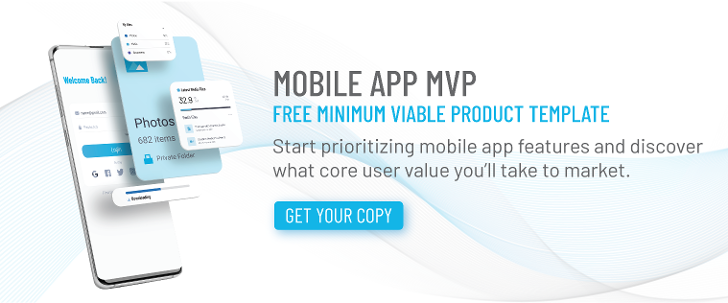Low cost, easy to use and install, and incredibly effective, beacon technology has become a popular way to engage with customers – especially in retail and marketing.
Picture this: you step into a store to look at their shoe display, and suddenly you get a notification on your smartphone. You check it and discover a 20% off coupon for those brand-name sneakers you’ve had your eye on, just for you! That’s just one example of the power of beacon technology.
Beacons aren’t new. In fact, they’ve been around since 2013, when Apple released their iBeacon. While usage has grown slowly, demand has reached record levels. Indeed, according to reporting from Allied Market Research, the global beacon market generated $3 billion in 2020, and is expected to top out at $103.94 billion by 2030.
But what is beacon technology? How does it work? And what benefits are driving this rise in demand? Let’s discuss.
What is Bluetooth Beacon Technology?
Put simply, a Bluetooth beacon is a tiny, wireless, battery-powered radio transmitter. This minuscule radio transmitter can be “discovered” by mobile devices within a certain distance. The beacon, however, cannot “see” the devices in return.
One of the advantages of beacon technology is that it doesn’t require an internet connection, yet broadcasts within a short radius. Receiving devices, like smartphones, can then act as something of a middle-man that uses the information transmitted by the beacon to perform some task.
The distance beacons can transmit is usually between ten and thirty meters of indoor space, and creates a connection between the physical and digital worlds. This is achieved by forming a communication bridge between the device, a user’s smartphone, and the user themselves.
The goal of beacon technology is to allow businesses to automate some processes, and, more importantly, improve user experience and interactions. This is thanks to the fact that beacons are a part of the Internet of Things (IoT). IoT is the connection between enabled devices and machines to gather and transmit data without the need for a human-to-human, or even human-to-computer interaction.
How Does Beacon Technology Work?
Beacons transmit data packets which are then picked up by compatible devices, like smartphones. These data packets can be either self-contained, or act as triggers for events on the receiving device. These events might include push notifications, app actions, prompts, etc.
Many beacons utilize Low-Energy Bluetooth, or BLE, as their transmission protocol. BLE uses the same radio spectrum as Bluetooth Classic (2.400 – 2.4835 GHz ISM band), but uses different channels. In fact, BLE utilizes three primary advertising channels, which help make it faster for devices to connect, and reduces the time a listening device scans for the signal.
In theory, a Bluetooth beacon works at a maximum distance of less than 100 meters. What’s more, the latency can be up to 6 milliseconds from a non-connected state. The actual range and response time in real life depends on a variety of factors, including the beacon itself, and what process it has been programmed to achieve. Most beacons can reliably transit to about thirty meters, provided no physical obstacles lie in the path of the signal. In real-world usage, you can expect a reliable range of between two and five meters. Of course, the higher the range, the faster the battery dies.
Some beacons work with Wi-Fi, which may offer a wider range depending on where the emitter is located.
The Benefits of Beacons
Beacon technology offers an impressive range of applications, especially when it comes to retail. Let’s take a look at some of the most prominent.
Track In-Store Movement
One of beacon technology’s most incredible applications is its ability to create a united online and in-store experience. Beacons can be used to track customers’ in-store movements, which allows you to send them targeted information and discounts based on the products they are near – and presumably browsing.
This can help improve conversion rates, and it’s not hard to understand why; a customer is more likely to use a discount for an item if they are in that item’s section of the store.
A prime example of this is Macy’s. The department store has been using beacon technology since 2016. When a customer visits the store and opens the Macy’s app on their smartphone, the app connects to the nearest beacon and recognizes where the smartphone is in the store. If the customer is in the shoe department, for example, the app will remind them of the shoe brands they have already liked online. This targeted information, provided at just the right time, can help convince the customer to make a purchase.
In-Store Navigation
Speaking of department stores, many are so large they can be overwhelming. How often have you spent time wandering aimlessly around a store looking for what you came in for, only to get frustrated and leave without it? Beacon technology is an ideal solution for this common problem! With the combination of a mobile app and strategically placed beacons, you can provide customers with a real-time indoor map of the store.
A real-world example of this comes from Target. Back in 2017 the big box retailer began using beacon technology to provide a “GPS for your shopping cart” function. In practice, this means in-store customers can use the Target app to create a shopping list. From there, the app lets them see where their items are located, and where they are in relation to them. As they move about the store, their position in the app changes in real-time, helping them hone in on what they want.
While the most obvious application of this is for retail, it can also be applied to any large venue. Imagine how much easier it could be to find your way around hospitals, stadiums, or airports.
Proximity (or Out-of-Store) Marketing
Another benefit of beacon technology that is widely used is proximity marketing. Beacons installed in shops, event venues, or even public places can allow businesses to track the location of their customers. With this real-time information in hand, it’s easier to notify users that they are near your shop, or provide a targeted deal to bring them in. Additionally, this offers the chance to do something more complicated, like send messages related to sales, discounts, loyalty programs, and competitions. Even brands that you carry in-store can themselves push product discounts to draw customers in.
By using beacon technology, you have the ability to personalize your out-of-store marketing, and improve your potential foot-traffic. Now, with smartphones in virtually every pocket, proximity marketing will undoubtedly continue to grow.
Asset Tracking
Asset tracking, sometimes called asset management or asset visibility, is a core component of any Real-Time Location System (RTLS). It allows you to know the exact location and condition of your assets. This, in turn, lets you locate them quickly on site, keep track of their flow and usage, and make better, data-driven decisions regarding replenishment, purchases, or efficiency.
Of course, when it comes to asset tracking a long battery life and strong signal stability are critical. The signal performance in particular will have a big impact on the accuracy of your tracking efforts. Furthermore, you’ll need to prioritize the lifespan of your hardware. This will save you the time and effort of replacing them more often than is necessary.
Additional Beacon Technology Benefits and Uses
- Contact tracing.
- Occupancy monitoring.
- Loyalty programs.
- Mobile ticketing.
- Advanced data gathering.
Final Thoughts on Beacon Technology
It’s difficult to predict just how popular beacon technology will become. The technology itself isn’t exactly new, and has experienced some setbacks. That said, the recent rise in its popularity is undeniable.
However, one indisputable advantage beacons offer is their relatively inexpensive price tag, especially when compared to other technologies. That means any business of any size can adopt – and adapt – the technology with very little risk.
In the end, beacon technology can help you gain a better understanding of your audience, while also supporting and complementing your existing marketing. In other words, beacons help you find new, exciting, and targeted ways to communicate with your mobile app users.
Keep Reading:







